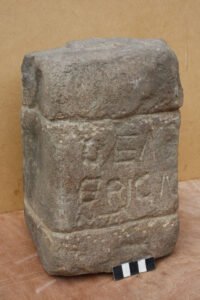Caer Caradoc is often linked to Caradoc (or Caradog), a prominent figure in Welsh mythology and Arthurian legend. Caradoc is considered one of the knights of the Round Table in Arthurian lore, and he is sometimes referred to as Caradoc of the Battle or Caradoc the Brave. He was known for his bravery and his loyalty to King Arthur.
Category: Roman
Jan 19
Rome: The Emperors Claim to Divinity
The Emperors Claim to Divinity In Roman religion, the relationship between the emperors and the gods was complex and evolved over time. The concept of divinity in Roman imperial ideology became a central part of the Roman imperial cult and the emperor’s sacred authority. While there wasn’t a formalized concept of a “divine marriage” in …
Altar dedicated to Nympha Brigantia – Castlesteads?
“This offering to the goddess-nymph Brigantia, which he had vowed for the welfare and safety of our Lord the Invincible Emperor Marcus Aurelius Severus Antoninus Pius Felix Augustus and of his whole Divine House, Marcus Cocceius Nigrinus, procurator of our Emperor and most devoted to his divinity and majesty, gladly, willingly, and deservedly fulfilled.”
Altar dedicated to Jupiter of Doliche, Caelestis Brigantia, and Salus – Corbridge
“To eternal Jupiter of Doliche and to Caelestis Brigantia and to Salus Gaius Julius Apolinaris, centurion of the Sixth Legion, at the command of the god (set this up).”







